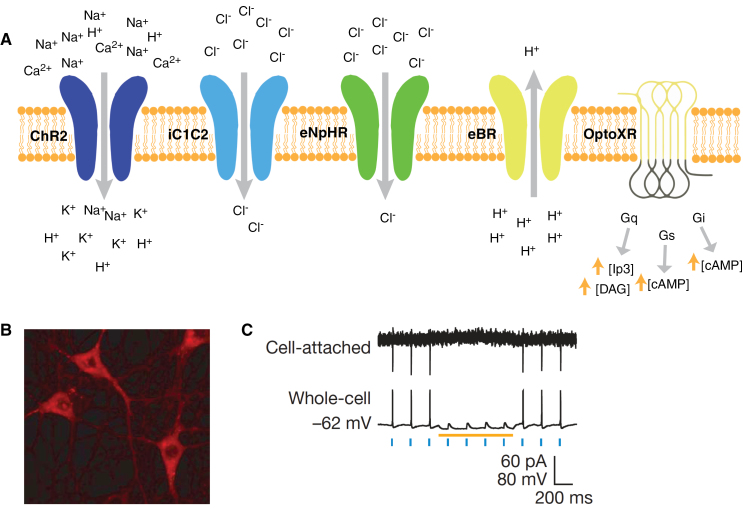Figure 1.
(A) Opsins are membrane-bound proteins that are activated with light, which results in cell activation (depolarization), inhibition (hyperpolarization), or modulation of intracellular signaling cascades. A wide variety of opsins are now available. Illustrated here are ChR2 (a cation channel used to stimulate neural activity), iC1C2 (a newly developed chloride channel used to inhibit neural activity), eNpHR3.0 (a chloride pump used to inhibit neural activity), eBR (a proton pump used to inhibit neural activity), and OptoXR (a G protein–coupled receptor used to modulate intracellular signaling cascades). (B) Neurons in culture expressing a ChR2-mCherry fusion protein. (C) Cell-attached and whole-cell recordings from a neuron expressing both ChR2 and NpHR. Note that individual spikes can be elicited with a short pulse of blue light (which activates ChR2) and that these spikes can be blocked with continuous yellow light (which activates NpHR). Panel A adapted with permission from Fenno et al., 2011, and panels B and C adapted with permission from Zhang et al., 2007.

